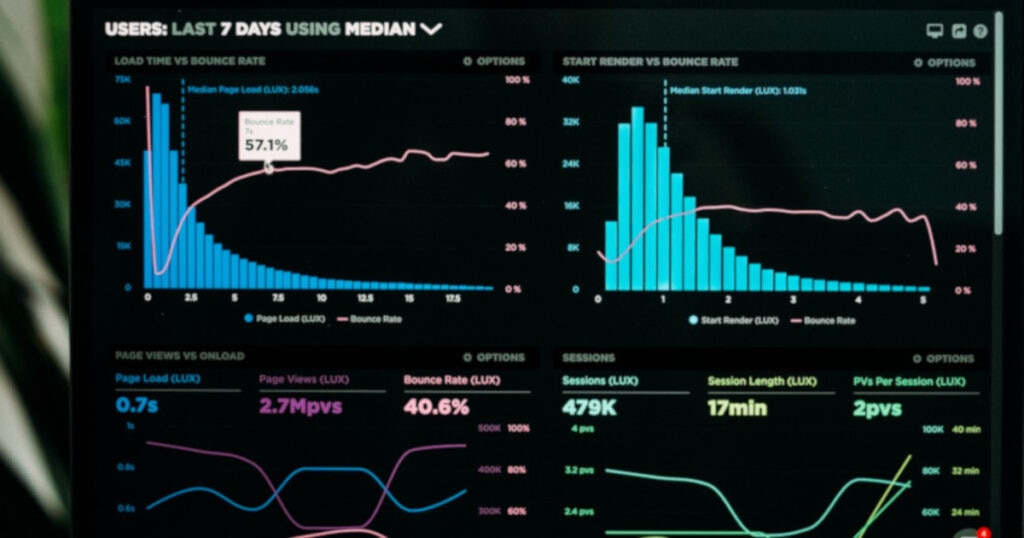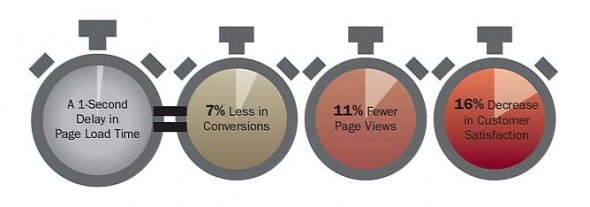In the last post we’ve discussed non-technical and technical elements that influence your website’s performance, and, in turn, user-experience and revenue.
In this article we’ll discuss key ecommerce performance metrics that influence conversions.
Book a demo today to see GlobalDots is action.
Optimize cloud costs, control spend, and automate for deeper insights and efficiency.

These are the metrics you should always monitor and optimize to ensure your ecommerce website runs smoothly and efficiently, to maximize the conversion rate of your visitors.

Key Ecommerce performance metrics
A great user experience is everything when it comes to running a website. These are the metrics that need to be considered for a great user friendly website with great user experience:
1. Time to title (T2T)
T2T is the time elapsed from the moment a visitor’s browser requests your site to the movement that your site’s title appears in the tab of his or her browser. T2T is largely dictated by your backend performance – how fast your website’s content is delivered from your origin server to the visitor’s browser.
2. Time to start render
Time to start render is the time elapsed from the request to when the visitor sees the actual website content appear on the page. This moment is important since it assures the visitor that your site is loading.
3. Time to display
T2D is the time elapsed from the request to when the browser has finished parsing the HTML page, constructed the DOM and displayed the HTML document. Basically, the page will look like a web page, but some images, interactions, and other media won’t be fully loaded.
4. Time to interact
T2I i the time elapsed from the request to the moment the user can interact with the page. This means that the visitor will be able to use the web page, even though the page might not fully load.
5. DNS Time
DNS Time is the time it takes for your DNS provider to execute it’s service. A typical DNS time is 60 mili-seconds, if your DNS is slower than that, find a new provider.
6 .Connection time
CT is the time elapsed from the request to when the connection between the visitor’s browser and your origin server is established. Normal CT is around 150 mili-seconds.
7. First Byte Time
The backend process for the first byte of your website to travel along the connection to the visitor’s browser. Once it arrives, your First Byte Time is registered. The only impediment to achieving a good First Byte Time is poorly structured code.
8. Last Byte Time
LBT is the final backend metric. It’s logged when every byte of your site has made it to the visitor’s browser. 700 mili-seconds is the average LBT.
9. Domains
More domains means more risk for performance issues. If the 3rd party provider has an issue it could drag down your site. Monitor your domains to be sure your site isn’t to dependent on other sources and in risk of being brought down by 3rd party issues.

You need a CDN to speed up your website
Times of mobile and app-based internet force more and more content providers, content makers, and online vendors to simplify navigation and improve user experience, primarily the page load time of their website.
Just one second of delay can cause up to 7% loss in customer conversions.
A Content Delivery Network (CDN) is a globally distributed network of web servers or Points of Presence (PoP) whose purpose is to provide faster content delivery.
The content is replicated and stored throughout the CDN so the user can access the data that is stored at a location that is geographically closest to the user. This is different (and more efficient) than the traditional method of storing content on just one, central server.
The value of this is overall improvement of retail service delivery and the guarantee of retaining customers.
More data that proves the connection between website speed and number of sales:
- Walmart increased its total sales number by 2% for every second in increased webpage loading speed
- For every 400 milliseconds of increased webpage loading speed, Yahoo increased its traffic by 9%
- For every 100 milliseconds of increased webpage loading speed, Amazon increased its total turnover by 1%
- Shopzilla optimized its webpage loading speed from 6 seconds to 1.2 seconds. This lead to 25% increase in total website traffic and a 12% higher revenue
The leading CDN service providers and the biggest market players are Akamai, AT&T, Amazon Cloudfront, Google, Microsoft, Rackspace, CDNetworks, ChinaCache, and more. Choosing one depends on many factors such as your location, the size of your business, the overall reach and performance goal, as well as the need of your customers.
Implementing a CDN affects everything, from your internal architecture to the cost of your IT staff, performance management and more.

A great CDN provides ultimate delivery, speeding up your website and delivering the content at optimal speed for a great user experience. The multimedia gets loaded faster, as well as the overall page. The goal is to reach the 2 second lapse.
Using a CDN gives you a competitive advantage by making your site the fastest and the most secure, boosting your conversions. The first rule of e-commerce says that if the customer cannot find your product/service, he cannot buy it.
Another good way to boost your website’s performance and revenues is to pair a CDN with a DNS.
Every first user interaction with a website starts with a DNS, but if it goes down, the site can’t be accessed. With a DNS solution, the probability of a total network outage is decreased because DNS providers build their networks 100% reliable. A combined DNS/CDN solution ensures the maximum performance of the website, quickly delivering the content to ensure the highest user experience possible, giving the flexibility when it comes to updating the website.
These are the key advantages of a paired DNS/CDN solution
- Performance – The distribution of traffic across multiple CDN’s and endpoints optimizes the performance and levels CDN outages.
- Reliability – Even if a CDN goes down the provider’s network often supports CDN’s with automated failover, giving the content availability at all time.
- Availability – Independent DNS service lets you pick CDN providers based on geography, price, features and such. There’s always the option of swapping CDN providers without disrupting the service.
Conclusion
If you run a large commerce website, it’s crucial that you constantly monitor and optimize your website to provide the best user-experience possible. This will keep your customers happy, and in turn it will increase brand loyalty, conversions and revenue.
If you have any questions about how to effectively optimize your key ecommerce performance metrics, contact us today to help you out with your performance and security needs.






